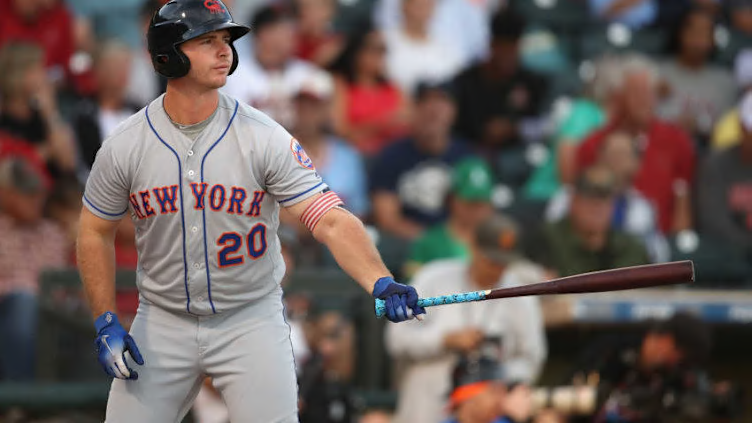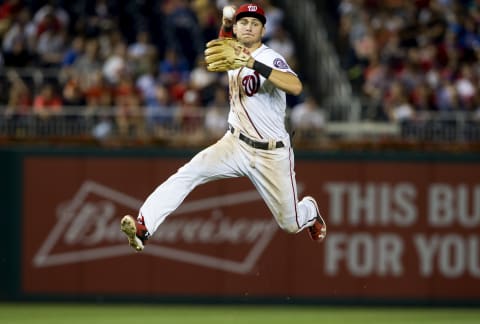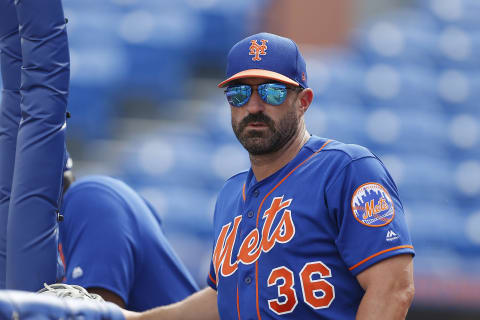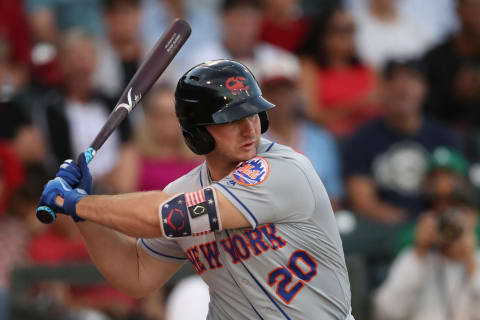Three takeaways from the Mets opening series victory against the Nationals


It’s still too early to draw any concrete conclusions about how the 2019 season will shake out for any team, but the New York Mets and Washington Nationals did show us some pretty interesting things over their opening three-game series.
There are few things more satisfying than MLB’s opening weekend. After a long, cold offseason of waiting for your team to sign Dallas Keuchel (they didn’t) there’s finally baseball that matters and all feels right in the world. With that mind, let’s take a closer look at the opening series between the Nationals the Mets.
The two teams faced off in a contentious series, and although the Mets took two out of the three games both groups seemed pretty evenly matched.
This is great news for anyone who likes to watch competitive baseball. The two rivals will face off in five more series this season, and in a division that looks to be as tight as the NL East does this year every game is going to be one of consequence.
It’s important not to try and take too much away from one series, especially one that comes early in the season, but it’s also hard to watch a series like this without thinking about them in the context of how a team might do going forward. This is especially true for teams like the Mets and the Nationals who went through periods of serious change this offseason.
The Nationals, as you have heard a thousand times, are now without Bryce Harper, who for years was the face of their franchise. This changes the onfield makeup of the team, and also has a major effect on the groups’ personality as a whole.
The Nationals pitching staff is also looking pretty different this year. The additions of Patrick Corbin and Anibal Sanchez do a lot to make an already impressive group deeper, and if all goes well the Nationals rotation could be one that’s talked about in the same breath as the 2014 Tigers group (they do have a few of the same pieces).
On the other side of things, the Mets have seen just about as much change in the front office as they have on the field. New GM Brodie Van Wagenen has been incredibly vocal about his vision for the team, and how his tenure goes will have a big effect on people’s opinions on agents turned executive going forward.
Of course, things have changed a ton on the field too. Veterans Robinson Cano and Wilson Ramos bring the team some much-needed offense, and rookie Pete Alonso brings some power and excitement to the group.
With that in mind and the weekend behind us, let’s talk about the things that jumped out from the Mets vs. Nationals opening series.

3. Trea Turner is ready to be a legitimate superstar
No Nationals player looked better in this series than Trea Turner.
Turner had a good year last year. He played in every single game and led the league in plate appearances, finishing the season with an NL leading 43 stolen bases and a 100 OPS+. On top of that, he showed markable defensive improvement, and his UZR increased from -1.0 to 3.2.
Still, some were disappointed. Turner’s overall numbers at the plate were just a touch above league average, and he failed to flash the power potential that he displayed in his rookie season.
This downgrading of Turner in the public eye from potential all-star to just above average speedster had more to do with unfair expectations than poor performance. Still, this year it looks like he’s fighting back.
Turner’s stat line from the opening series is incredible. He slashed .385/.429/.923 with 2 home runs and 4 stolen bases over 14 plate appearances, a performance highlighted by his walk-off home run in the series’ final game.
This is the Trea Turner that Nationals fans were hoping to see last year; a solid bat with some pop and legs that can cause havoc on the basepaths.
Last year one of Turner’s problems was his inability to put hard-hit balls into play; his hard hit percentage put him in the bottom half of the league which had a series effect on his BABIP.
Over this series, Trea did not have that problem at all. Of the eight balls that he put into play, only one had an exit velocity below 94 MPH, and he had five balls, including his two homers, leave the bat at over 100 MPH.
If Turner can keep this up and prioritize hard hit balls, even if there’s a drop in his contact percentage, he’s going to have a heck of a season.

2. Mickey Callaway has a better handle on NL style management
Last year Mets’ manager Mickey Callaway had a few hiccups during his inaugural season, highlighted by the time the team was penalized for batting out of order.
It’s too early to tell if mistakes like this are in the 2019 Mets future, but Callaway showed some quality decision making in this opening series.
One reason for these improvements might be the addition of Jim Riggleman as the Mets’ bench coach; Riggleman has 13 years of managerial experience, 12 of which came in the NL. Callaway only spent time as a pitching coach in the AL prior to joining the Mets, so putting a seasoned vet on the bench next to him is definitely a good thing.
Callaway’s line-up construction through this series was a comforting thing to see for Mets fans.
Last year Callaway made some head-scratching decisions with his batting orders. There was a period over the summer where he seemed hesitant to leadoff with Brandon Nimmo, the team’s OBP leader, and he’d often bat declining veterans like Jose Bautista second.
During this series and much of the spring, Callaway stuck with having Nimmo leadoff, followed by Pete Alonso and Robinson Cano. One could argue that Cano should be hitting in the second spot, but the line-up overall makes much more sense at first glance than what we often saw last year.
Callaway also did a great job with his double switches and defensive replacements in the series, making sure that in crunch time the more surehanded Dominic Smith took over for Alonso at first and that Keon Broxton or Juan Lagares found their way to the outfield.
These may be little things, but the fact that Callaway was able to do them seamlessly without totally throwing off the batting order/missing a double switch opportunity is a good sign. When Todd Frazier and Jed Lowrie return then Callaway will have even more depth to play with, and he can show the league that he’s a more than passable skipper.

1. Pete Alonso is definitely ready
There were a lot of Pete Alonso criticisms being hurled out by the Mets last year as they tried to justify not bringing up the hard-hitting first baseman in September.
More from Call to the Pen
- Philadelphia Phillies, ready for a stretch run, bomb St. Louis Cardinals
- Philadelphia Phillies: The 4 players on the franchise’s Mount Rushmore
- Boston Red Sox fans should be upset over Mookie Betts’ comment
- Analyzing the Boston Red Sox trade for Dave Henderson and Spike Owen
- 2023 MLB postseason likely to have a strange look without Yankees, Red Sox, Cardinals
Though most of these arguments had to do with his defense there were some offensive concerns put out as well; despite the fact that he never had an OPS below .849 in the minors some scouts wondered if he’d be able to hit elite level right-handed pitching.
Most of this talk smelled of service time manipulation, but it was hard to totally ignore. Plenty of players rake in the minors only to disappoint once they’re called up, so there were some feelings of trepidation as Alonso came forward to take his first MLB hacks.
This trepidation was unnecessary.
Against the Nationals Alonso slashed .500/.571/.750 in 14 plate appearances, arguably the best offensive performance of any Met in the series.
Though Alonso was set down on strikes twice by Max Scherzer he was able to hold his own against the likes of Stephen Strasburg and Patrick Corbin, which indicates he’ll be fine against high-level MLB pitching.
Another promising thing about Alonso’s series was his plate discipline. Alonso has been fairly touted as a guy that hits the ball hard, and to do that at the major league level one often has to sacrifice some contact skills.
Alonso was able to crush the ball, with the hardest hit ball in play in two of the three games in the series, while still having a 76.7% contact percentage, which is only a tick below league average.
With the small sample size of a three-game series it’s too early to say that Alonso is going to be a contact machine, but seeing him go up there and show these skills for the first time at the major league level is great to see.
Next. New York Mets: Revisiting the legend of Sidd Finch. dark
On top of that, there were no major defensive gaffs in the series, so thing are off to a great start for a guy who almost started the season in Syracuse.